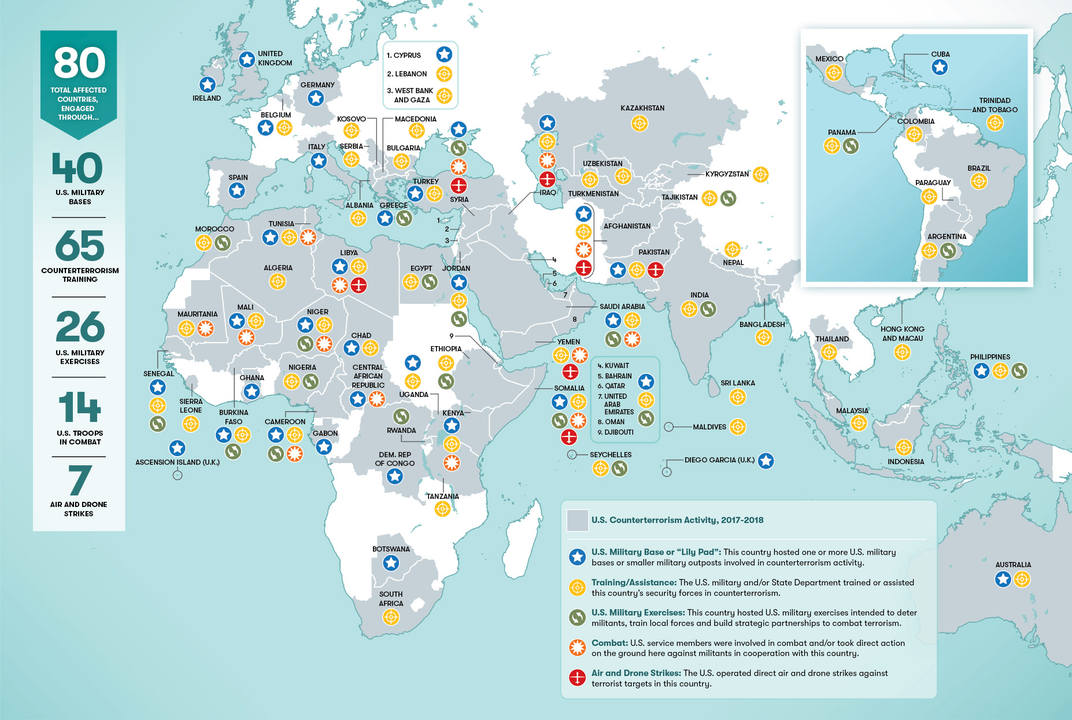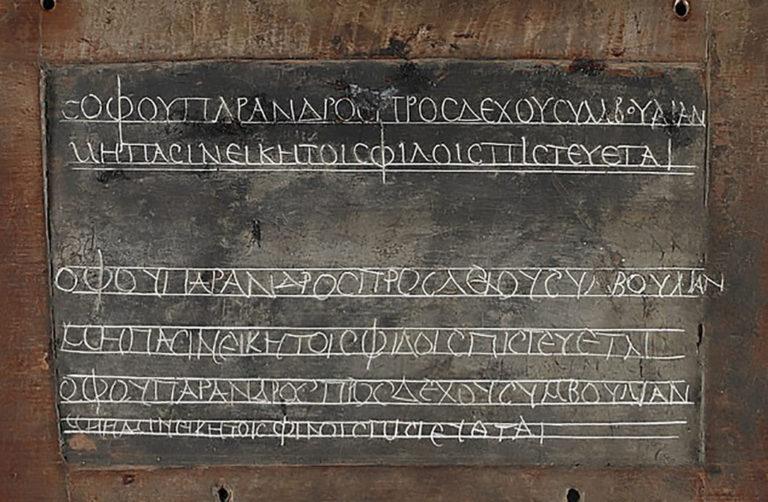[Most Recent Entries] [Calendar View]
Wednesday, January 16th, 2019
| Time | Event |
| 9:00a | Stephen Fry Narrates Two Animated Videos Explaining How Fear, Loathing & Misinformation Drove the Brexit Campaign For millions watching in the UK and around the world, anticipating the looming Brexit deadline over the past two years has been like watching the slowest train wreck in history. But for those not following the coverage daily, the impending UK secession from the European Union is mystifying. Just how many trains are there, and where are they coming from, and how fast, exactly, are they going? From the future of food and drug imports, to the status of the “currently invisible” border between Northern Ireland and the Republic of Ireland, to all of the legal minutiae no one mentioned during the campaign, the consequences of the recent failure of a Brexit deal could be disastrous. Were “leave” campaigners honest in their sale of Brexit to the voters? Did they have any idea how such a thing would work? Ample evidence shows the answer to both questions is an unqualified No. The Vote Leave campaign director now describes the referendum as a “dumb idea.” Wealthy UK residents, including many a Brexit politician, are fast moving their assets out of the country. So how did Brexit get sold to voters if it’s such a potential catastrophe? The usual methods worked quite well, Stephen Fry explains in the video above. By stoking xenophobic fears over migrants and refugees, Brexiteers, he says, created “false assumptions about the EU, some very dark, and some comical.” They were assisted in conjuring a “mythical EU dragon” by tabloid journalists who called migrants “cockroaches” and “feral humans.” Rhetoric indistinguishable from Nazi propaganda drove a spike in hate crimes on both sides of the Atlantic. Despite the insistence of many voters that their choice was not driven by racial animus, the Brexit campaign, like the Trump campaign, Fry says above, undeniably was. The consequences of these votes for migrant workers and refugees speak for themselves. In the UK, Theresa May’s “hostile environment” policies have deprived British citizens from migrant families of livelihoods and safety. Some have faced threats of deportation, a situation similar to that facing the children of Vietnam War refugees in the US. Fry calls for identifying a “new enemy” of the people: misleading information like the false claim that the NHS would save 350 million pounds a week after Brexit and the repeated lies in the U.S. about undocumented immigrants, crime, and terrorism. “Perception of crime levels,” he says, “has become completely detached from reality,” especially since the biggest security threats come from hate crimes and right-wing violence, a situation reported on, warned about, and ignored, for several years. As in the US, so in the UK: relentlessly repeated claims about “invasions” has created a very hostile environment for millions of people. Are the facts likely to sway those voters who were carried away by excesses of hate and fear? Probably not. But those who care about the truth should pay attention to Fry's debunking. The facts about immigration and other issues used to sell far right policies and politicians, as he outlines in these videos, are entirely different than what Brexit leaders and their counterparts in the US want the public to believe. Related Content: Brexit 101: The UK’s Stunning Vote Explained in 4 Minutes Josh Jones is a writer and musician based in Durham, NC. Follow him at @jdmagness Stephen Fry Narrates Two Animated Videos Explaining How Fear, Loathing & Misinformation Drove the Brexit Campaign is a post from: Open Culture. Follow us on Facebook, Twitter, and Google Plus, or get our Daily Email. And don't miss our big collections of Free Online Courses, Free Online Movies, Free eBooks, Free Audio Books, Free Foreign Language Lessons, and MOOCs. |
| 3:00p | America at War: Infographic Reveals How the U.S. Military Is Operating in 40% of the World’s Nations
Earlier this month, NBC reporter and analyst William Arkin ended a 30-year career as a journalist, announcing in a “scathing letter,” Democracy Now! reports, that “he would be leaving the network. Arkin accuses “the media of warmongering while ignoring the, quote, ‘creeping fascism of homeland security.’” He does not equivocate in a follow-up interview with Amy Goodman. “The generals and the national security leadership" are also now, he says, “the commentators and the analysts who populate the news media” (Arkin himself is a former Army intelligence officer). The problem isn’t only NBC, in his estimation, and it isn’t only supposed journalists cheerleading for war. Most of the conflicts the country is currently engaged in are un- or under-reported in major sources. His letter “applies to all of the mainstream networks, applies to CNN and Fox, as well…. We’ve just become so shallow that we’re not really able even to see the truth, which is that we’re at war right now in nine countries around the world where we’re bombing, and we hardly report any of it on a day-to-day basis.” This isn’t the case with independent media organizations like Democracy Now!, The Intercept, or Airwars. Secular and religious refugee relief organizations like the International Rescue Committee, World Relief, or Muslim Global Relief are paying attention. Many of these organizations are non-U.S.-based or connected to the “civilian experts” Arkin says once appeared regularly in the national media and represented opposing views, “people who might be university professors or activists… or experts who were associated with think tanks.” Airwars, affiliated with the Department of Media and Communications at Goldsmiths, University of London, has monitored conflicts around the world since 2014, with extensive coverage and records of alleged civilian deaths, military reports, and the names of victims. For a comparable U.S.-focused deep dive, see the Costs of War Project at Brown University’s Watson Institute of International & Public Affairs. The project’s website not only tracks the enormous economic costs of wars in the Middle East and Africa since 9/11; it also tracks “the human toll,” as you can see in the video below. At the top of the post, see a map (view in a larger format here) from the Cost of War Project’s Stephanie Savell, 5W Infographics, and the Smithsonian of all the regions where the U.S. is “combatting terrorism.” While most of the media orgs and non-profits mentioned above would probably dispute the use of that term in some or all of the conflict zones, Savell sticks with the official language to describe the situation—one in which the nation “is now operating in 40 percent of the world’s nations," as she writes at Smithsonian.com. Maybe no one needs an editorial to imagine the enormous toll this level of military engagement has taken over the course of 17 years since the inception of the “Global War on Terror.” The map covers the past two, illustrating “80 countries, engaged through 40 U.S. military bases,” and conducting training, exercises, active combat, and air and drone strikes on six continents. The selections, writes Savell, are “conservative,” and sourced from both independent and mainstream media outlets and international government and military sources. “The most comprehensive depiction in civilian circles of U.S. military and government antiterrorist actions overseas,” the America at War map provides information we don't often get in our daily—or hourly, or by-the-minute—diet of news. "Contrary to what most Americans believe, the war on terror is not winding down.” It is expanding. Given the country’s history of sustained mass movements against legally suspect, grossly expensive wars with high civilian casualties, disease epidemics, starvation, and refugee crises, one would think that a sizable segment of the population would want to know what their country's military and civilian defense contractors are doing around the world. via Smithsonian.com Related Content: Josh Jones is a writer and musician based in Durham, NC. Follow him at @jdmagness America at War: Infographic Reveals How the U.S. Military Is Operating in 40% of the World’s Nations is a post from: Open Culture. Follow us on Facebook, Twitter, and Google Plus, or get our Daily Email. And don't miss our big collections of Free Online Courses, Free Online Movies, Free eBooks, Free Audio Books, Free Foreign Language Lessons, and MOOCs. |
| 7:00p | An Ancient Egyptian Homework Assignment from 1800 Years Ago: Some Things Are Truly Timeless
Every generation of schoolchildren no doubt first assumes homework to be a historically distinct form of punishment, developed expressly to be inflicted on them. But the parents of today's miserable homework-doers also, of course, had to do homework themselves, as did their parents' parents. It turns out that you can go back surprisingly far in history and still find examples of the menace of homework, as far back as ancient Egypt, a civilization from which one example of an out-of-classroom assignment will go on display at the British Library's exhibition Writing: Making Your Mark, which opens this spring. "Beginning with the origins of writing in Egypt, Mesopotamia, China and the Americas, the exhibition will explore the many manifestations, purposes and forms of writing, demonstrating how writing has continually enabled human progress and questioning the role it plays in an increasingly digital world," says the British Library's press release. "From an ancient wax tablet containing a schoolchild’s homework as they struggle to learn their Greek letters to a Chinese typewriter from the 1970s, Writing: Making Your Mark will showcase over 30 different writing systems to reveal that every mark made – whether on paper or on a screen – is the continuation of a 5,000 year story and is a step towards determining how writing will be used in the future." That wax tablet, preserved since the second century A.D., bears Greek words that Livescience's Mindy Weisberger describes as "familiar to any kid whose parents worry about them falling in with a bad crowd": "You should accept advice from a wise man only" and "You cannot trust all your friends." First acquired by the British Library in 1892 but not publicly displayed since the 1970s, the tablet's surface preserves "a two-part lesson in Greek that provides a snapshot of daily life for a pupil attending primary school in Egypt about 1,800 years ago." Its lines, "copied by this long-ago student were not just for practicing penmanship; they were also intended to impart moral lessons." But why Greek? "In the 2nd century A.D., when this lesson was written," writes Smithsonian.com's Jason Daley, "Egypt had been under Roman rule for almost 200 years following 300 years of Greek and Macedonian rule under the Ptolemy dynasty. Greeks in Egypt held a special status below Roman citizens but higher than those of Egyptian descent. Any educated person in the Roman world, however, would be expected to know Latin, Greek and — depending on where they lived — local or regional languages." It was a bit like the situation today with the English language, which has become a requirement for educated people in a variety of cultures — and a subject especially loathed by many a homework-burdened student the world over. via Livescience Related Content: You Could Soon Be Able to Text with 2,000 Ancient Egyptian Hieroglyphs Try the Oldest Known Recipe For Toothpaste: From Ancient Egypt, Circa the 4th Century BC The Turin Erotic Papyrus: The Oldest Known Depiction of Human Sexuality (Circa 1150 B.C.E.) Based in Seoul, Colin Marshall writes and broadcasts on cities, language, and culture. His projects include the book The Stateless City: a Walk through 21st-Century Los Angeles and the video series The City in Cinema. Follow him on Twitter at @colinmarshall or on Facebook. An Ancient Egyptian Homework Assignment from 1800 Years Ago: Some Things Are Truly Timeless is a post from: Open Culture. Follow us on Facebook, Twitter, and Google Plus, or get our Daily Email. And don't miss our big collections of Free Online Courses, Free Online Movies, Free eBooks, Free Audio Books, Free Foreign Language Lessons, and MOOCs. |
| << Previous Day |
2019/01/16 [Calendar] |
Next Day >> |




